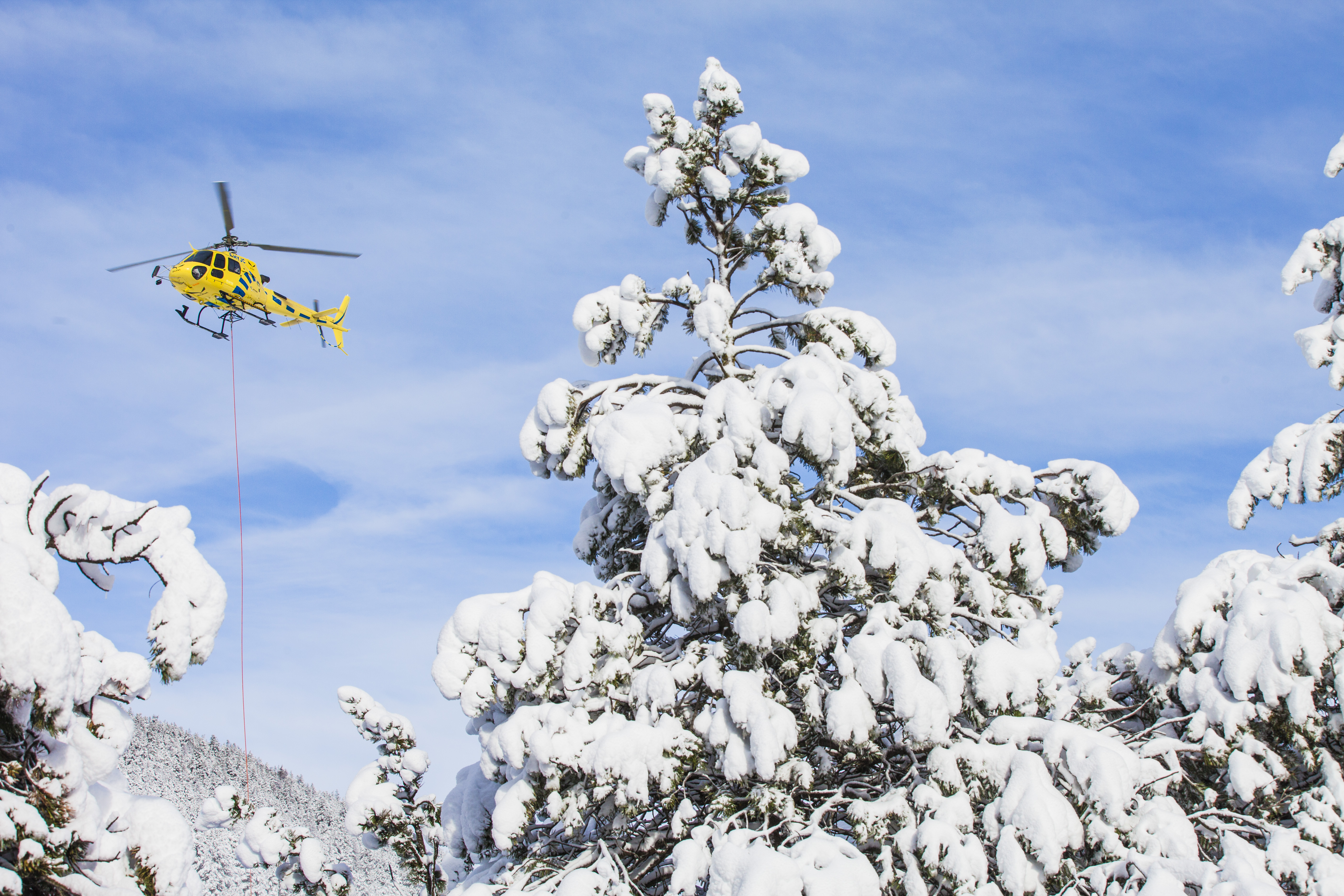
What is an avalanche?
Snowfall in Andorra makes for a beautiful spectacle, with white ski slopes peeking out among the principality’s natural scenery. Heavy snowfall can, though, be what causes an avalanche in certain circumstances, which is why the authorities in Andorra have put in place a series of measures to control avalanches.
In this guide on avalanches, what follows is a breakdown of all you need to know about what is an avalanche, what causes an avalanche, how fast can avalanches travel and how mountain authorities prevent avalanches.

What is an avalanche? Are there different types of avalanches?
Let’s start with the most basic question when it comes to avalanches, which is: what is an avalanche exactly?
The dictionary defines an avalanche as “a large amount of ice, snow and rock falling quickly down the side of a mountain”, while geologist would add that there are three main types of avalanches. These are:
- Slab avalanches: These occur when there is a deposit of compressed snow and when a weaker layer of snow, or weaker slab of snow, breaks off from the rest and falls down the side of a mountain.
- Powder snow avalanches: As the name suggests, this type of avalanche is made up of looser and thinner snow, rather than thick slabs. As for what causes an avalanche of this type, it starts from a single point where the snow is not well-bonded, and then the avalanche spreads downhill collecting more snow. They can hit speeds of 300km/h.
- Wet snow avalanches: These take place with wetter snow, caused when the temperatures rise and when there is more water on the slopes as a result of melting. As the outer layers melt, the water floods the lower layers of snow and can disturb the stability of the snow. These types of avalanches are quite slow, typically travelling at 10km/h to 40km/h.
It’s clear to see, then, that the general term of ‘avalanche’ covers quite distinct types of snowslide. Looking at the last two types, for example, there’s even a huge difference when it comes to answering the question of how fast can avalanches travel. So, there are many different scales and types of avalanches.
What causes an avalanche?
Now that we know what is an avalanche, at least in a general sense, the next question is to consider what triggers an avalanche to start. With each of the types outlined above, there can be different triggers, but the most important causes are:
- Earthquakes
- Significant changes in temperature
- Extraordinarily heavy snowfall
- Vibrations from machinery or construction
- Human activity
Fortunately, most of these potential triggers either don’t apply in Andorra and the Pyrenees or they are closely monitored by the Andorran authorities or by the experts in and around Grandvalira.
There is an organisation in Andorra called the Àrea de Conservació i Explotació de Carreteres (COEX) – which translates to the Roads Development and Conservation Body, in English. This body works with the latest technology, such as the Gazex avalanche control system, to either prevent avalanches from occurring in Andorra and its ski slopes or to carry out small, controlled avalanches, which prevent larger ones from happening. In total, COEX oversees 20 avalanche control zones in Andorra.
Therefore, visitors to Andorra can travel safely and securely, free from fears about avalanches. While it is interesting to know what is an avalanche and what causes an avalanche, skiers in Andorra can enjoy the slopes without having to worry about how to survive an avalanche. The authorities and bodies such as COEX are always learning more and more information about avalanches and are investing in the most state-of-the-art technology, meaning they can constantly reduce the risk.
